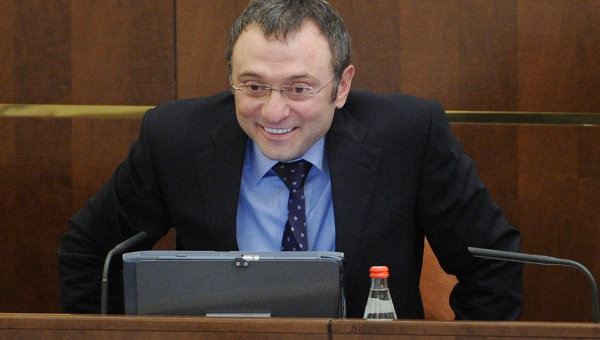
Moscow Shows Renewed Interest in the Fate of Ethnic Minorities in Azerbaijan
Publication: Eurasia Daily Monitor Volume: 9 Issue: 125
By:

On June 18, the Federal National-Cultural Autonomy of Lezgins held its first conference in Moscow. Issues facing ethnic Lezgins and Avars, both of whom are divided between Dagestan and Azerbaijan, were discussed at the forum. The political importance of the event was reflected in the fact that several Russian officials attended, including Dmitry Grabilin of the Russian presidential administration, Oleg Murashev of the Russian Foreign Ministry, Boris Vorobyov of the Federal Migration Service and Sergei Mikhalev of the Federal Border Guard Service. The conference took place at Moscow’s President Hotel, which belongs to the Russian presidential administration (https://gazeta-nv.info, June 22).
The attempt to revive the Lezgin issue is interesting because it highlights Moscow’s undying interest in this contentious subject and the Lezgins’ ability to articulate their interests. Ethnic Lezgins use one of the indigenous Caucasian languages, while Azerbaijani is a Turkic language. Lezgins traditionally reside in southeastern Dagestan, popularly known in Dagestan as Yuzhdag, whose main city is Derbent, and in northern Azerbaijan. According to the 2010 Russian census, there were close to 400,000 Lezgins living in Dagestan, slightly more than 13 percent of the republic’s general population. More than 130,000 ethnic Azeris also live in the southwestern part of the republic. There are 850,000 ethnic Avars in Dagestan, but the Dagestani Avars’ kinship with the Rutuls and Tsahurs, which are sub-ethnic Avar groups across the border in Azerbaijan, is less direct than the Lezgins’ connections with their brethren in Azerbaijan (https://www.gks.ru).
At the conference in Moscow, Lezgin activist Arif Kerimov objected to diminishing the role of the Lezgin language in Azerbaijan and the unwillingness of its government to support ethnic minorities’ cultural and economic well-being. Kerimov said the signing of a Russian-Azerbaijani border agreement in 2010 was “a shock” to the Lezgin people because a Lezgin enclave, including the villages of Khrakh-Uba and Uryan-Uba, were handed over to Azerbaijan. The signing of an inter-governmental agreement between Russia and Azerbaijan on ethnic minorities, dual citizenship and greater rights for minority languages in Azerbaijan would solve the problems that Dagestani minorities experience in Azerbaijan, according to Kerimov. The problem of sham population statistics appeared to be a particularly sensitive subject. According to the Dagestani editor and journalist Marko Shabkhano, the official number of Avars living in Azerbaijan is 50,000, while the experts estimate the number to be closer to 200,000 (https://www.regnum.ru/news/kavkaz/dagestan/1542825.html). Lezgin activist Amil Sarkarov claimed that the official figure of 180,000 ethnic Lezgins residing in Azerbaijan is four times lower than the actual figure , which he said is 700,000 (https://gazeta-nv.info, June 22).
The Lezgin separatist movement Sadval, which was considered a terrorist organization in Azerbaijan, was relatively strong and radical at the beginning of 1990s, but eventually became insignificant as a result of Moscow’s reduced support for the organization. Azerbaijani authorities cracked down on Sadval’s activists following two attacks in the Baku metro in 1994. The attacks were attributed to Sadval and the Armenian security services, and dozens of Lezgins were jailed after these attacks. Some of these figures are considered to be political prisoners by Azerbaijani rights activists (https://lib.rus.ec/b/282887/read). Currently, Sadval no longer openly aspires for a separate sovereign country for ethnic Lezgins, but rather for an administrative unit. Although Azerbaijan bears the main brunt of criticism from Lezgin nationalists, Lezgins also feel that their ethnic identity is eroding in multiethnic Dagestan. So they do not simply want the part of Azerbaijan that is populated with Lezgins to be joined with Dagestan, but rather to create a new administrative unit out of parts of Dagestan and Azerbaijan (https://lezgistan.tv/programma-dvizheniya/).
Following the Russian army’s incursion into Georgia in August 2008, the well-known Azeri expert, Eldar Zeinalov, warned that Azerbaijan was extremely vulnerable to ethnic conflict should Russia decide to play that card. Dagestani ethnicities account for more than 90 percent of the population of some districts in northern Azerbaijan, which forced officials in Baku to be extremely careful in order to avoid problems on its own territory (https://gusarnews.ucoz.ru/news/2008-12-02-242). Geidar Jemal, a well-known expert on Islam and the Caucasus, condemned the conference in Moscow as an “anti-Azeri event,” seeing Russian government involvement in the conference and calling on the Lezgins and Avars not to follow this path (https://kavpolit.com/severnyj-kavkaz-kak-instrument-dekonstrukcii-yuzhnogo-kavkaza/). According to Armenian expert Igor Muradyan, the Russian security services in 2009 were in the process of replacing Sadval’s meek leaders with a new, more aggressive generation of politicians. Muradyan alleged that Lezgin armed groups would be used to strike military targets in Azerbaijan should the war in Karabakh restart (https://realcaucasus.org/21).
The Armenian expert’s assertions should be taken with caution because of the strained relations between Azerbaijan and Armenia. Still, plans for putting pressure on Azerbaijan using the Lezgins might be under way in Moscow as the recent conference seems to underscore. There certainly appear to be tensions brewing in northern Azerbaijan – not only ethnic differences, but also religious fissures. Experts say that since the Lezgins are Sunni and the Azeri are Shia, a religious component in the tensions surfaced in the 2000s (https://lib.rus.ec/b/282887/read).
Besides Moscow’s natural interest in conflicts in Azerbaijan, there is a fairly strong Lezgin community in Russia that is capable of political lobbying. Two ethnic Lezgins, Arif Kerimov and Gajimet Safaraliev, became members of the Russian presidential council on ethnic relations created in June 2012 (https://kremlin.ru/acts/15577). Other North Caucasian nationalities that are more populous than the Lezgins did not make it onto the council, which has only 50 members. The Russian billionaire Suleiman Kerimov may be one of the central figures in the Lezgin cause. He is an ethnic Lezgin who was born in Derbent, Dagestan. Kerimov’s fortune is estimated at $6.5 billion and, according to Forbes-Russia, he ranks 19th among Russian billionaires and 146th among the world’s billionaires. Kerimov donated $100 million to build the main mosque in Moscow. According to Forbes, prior to the economic crisis in 2008, Kerimov’s assets, much of them invested in Western financial institutions, amounted to $30 billion minus debts. Almost all of these assets were lost, Forbes reports (https://www.forbes.ru/profile/suleiman-kerimov). Kerimov’s financial revival after these losses probably means he has extremely good connections in the Kremlin and influential backers in financial circles.
This brief analysis indicates that there are serious resources on the side of the Lezgin cause that might be activated to undermine Azerbaijan. However, the absence of bellicose rhetoric on the Lezgin side probably means that at this point there are likely no plans to heighten tensions in Azerbaijan. The ratcheting up of the Lezgin issue resembles more of a warning to the energy-rich country than a serious revival of the “Lezgin card” used by Moscow against Azerbaijan in the 1990s.




